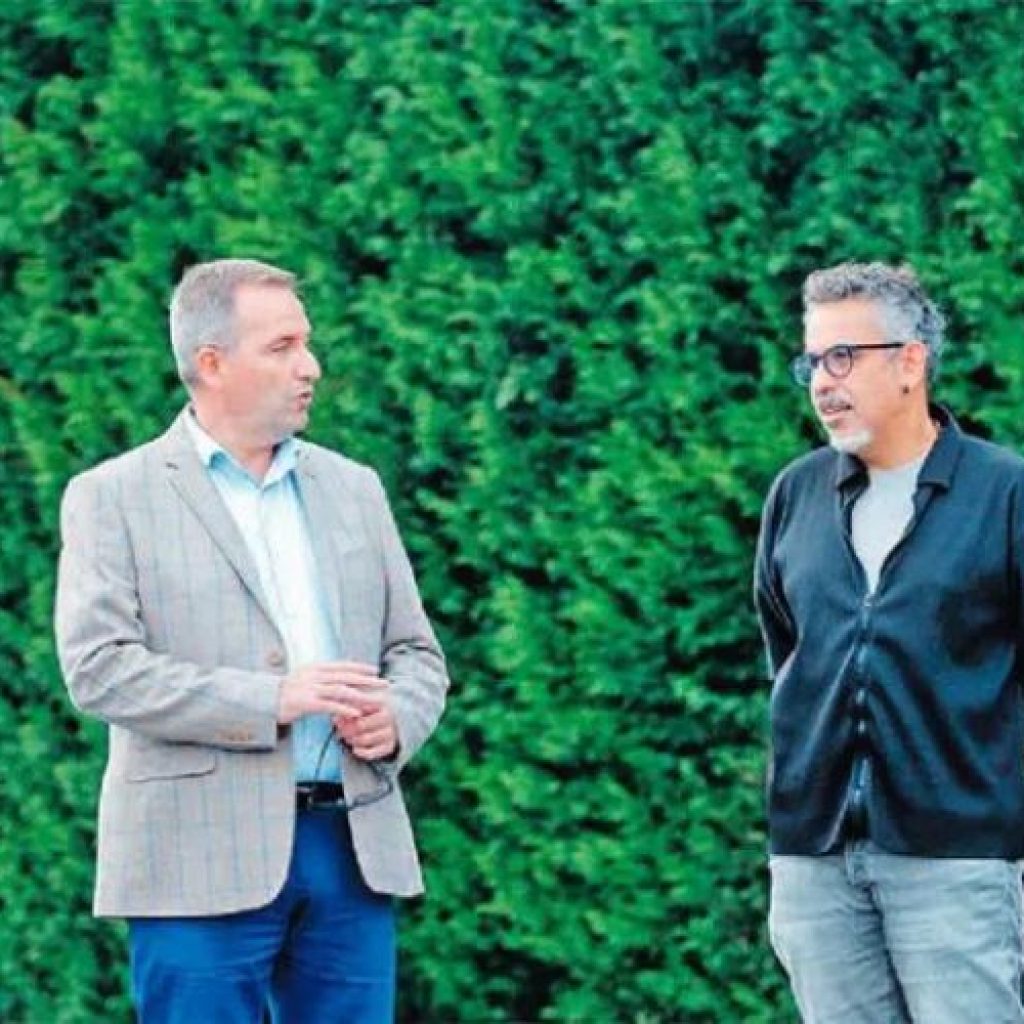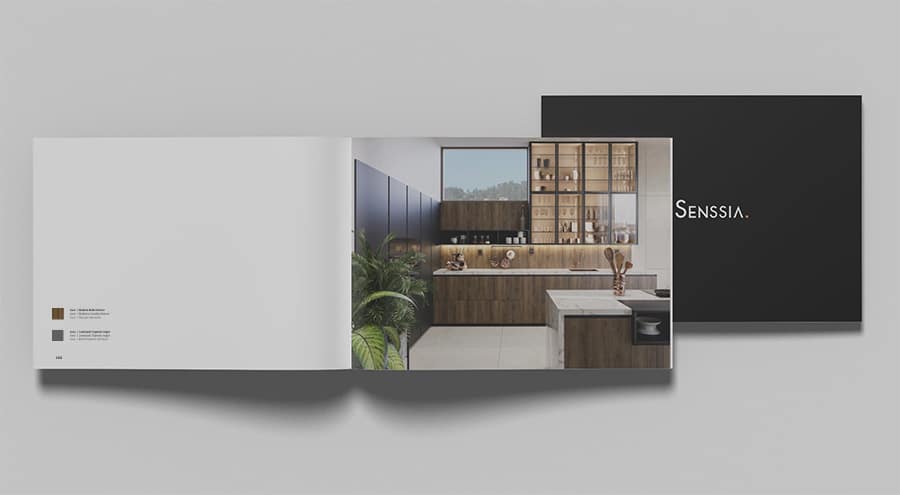M. MEIZOSO: TEXT / V. MEJUTO: PHOTOS
Without losing sight of its commitments to sustainability, the sector is also committed to the opening of new markets, design and innovation.
With the aim of promoting support to Galician companies when analyzing new markets, products and marketing channels, the recent collaboration project agreed by the Clúster de la Madera y el Diseño de Galicia and the Consellería de Economía, Empresa e Innovación was born. Promoting industrial design throughout the wood value chain is the challenge faced by a sector that took part in one of the informative round tables held at the Museum of the Santiago Rey Fernández-Latorre Foundation, within the framework of Inmogalia.
The four companies represented at the meeting applauded the initiative. “It is a project that was born out of a very clear need. Perhaps more so in the second transformation, where there is a variety of companies, some that are destined for contract, others for home furniture or those of us dedicated to the kitchen.” However, the requirement also lies in product editing, because “with this tool a company can decide which product to bring to market”. These were the words of Jesús Rodríguez, CEO of MBG Projects and collaborator
of Senssia. His company operates from Barro (Pontevedra) for the entire national market.
Juan Carlos Domínguez, head of Singular Projects at Cándido Hermida -a firm specialized in the global management of turnkey projects- expressed himself along the same lines, pointing out that “any effort made to boost the timber sector in Galicia is absolutely fundamental and welcome”.
The Ramón García Group is another of the leaders in a key segment for the Galician economy. The company, dedicated to the manufacture, design and execution of contract, retail, hotel and residential projects, collaborates with leading companies in its sector such as Inditex, BBVA and Paradores. With more than 540 direct jobs, the company is present in more than 70 countries. Its head of design, David García, insisted that “wood is a great value in Galicia, so everything that favors its use is welcome and healthy”. For his part, Pedro Álvarez, an industrial designer at A Cuadrado, stressed that with the plan come “opportunities and challenges at the same time. Working on values such as communication or publishing are important, but then we are faced with new challenges that are not traditional, such as the circular economy.
And here we not only have to think about the origin of the raw material, but also about what will happen to the wood after the product’s useful life in order to close the circle”. Located in the Pontevedra municipality of Salceda de Caselas, A Cuadrado is a design, architecture and business R&D management consulting firm. The firm operates in Galicia and other regions such as Castilla León, Madrid and Castilla La Mancha.

Product edition
Generating a catalog with references, product ranges and other data such as certifications or prices is essential for companies in the sector. The participants in the meeting agreed – with nuances – in stressing the importance of publishing their work. According to Rodríguez, “it is very necessary”, but “not easy to do”. On the contrary, it can be a “long and costly” process. In his opinion, each firm should focus on the company’s vision, the market it wants to reach and how its work is structured. “We have to start from that vision in order to, through the collaboration of all departments, bring out a product that reaches the niche market.”
The catalog is “what’s on the company’s doorstep,” Alvarez described. “Inside we know what we do, outside is the world and this is how I tell the world what I do,” he explained. An important tool for the marketer, “a dictionary to help us translate needs and opportunities”. A Cuadrado’s designer alluded to the transformation of the traditional catalog, which ceases to be “something that was in a ring binder” to adapt to new formats. “The customer no longer sees a product in a beautiful place, in a beautiful photo. He sees it in the place and floor space he wants to place it.” A technological leap that goes hand in hand with the exclusivity of each of the pieces and designs that come out of the Galician workshops. “We were born from a small carpentry shop that made, in a specific way, what the customer asked for and now we are living the new era that everything has to be special and different.
But it is true that we must start from what we understand as a product. In our case, it is defined as a service and is dedicated exclusively to one customer, whether he wants 100, 500 or a single piece,” Dominguez described. In the case of the Ramón García Group, its head of design explained that “not all ideas can be included in a catalog”. In the case of his company, “the product is highly variable.” “I think there are pieces that, because of the way they are worked and how they were born, it doesn’t make sense for them to be present in a catalog. They are exclusive and are made for someone very specific. But there are many others that do, because if you put them in a catalog, they will surely gain life. We have created products for hotels or for homes that are exceptional, and I am sure they could have another life; they could be serialized without any problem”.
Challenges
The companies’ vision of the future was clarified in each of the presentations. “Coupling ourselves and trying to be in the new markets that may come.” This is the challenge set by the Cándido Hermida group, according to Juan Carlos Domínguez. For the Ramón García Group, the key will be “to give value to the product where it does not have it at the moment. We want to expand into the international market, with what is already known about us, but also in the use of wood in a more sustainable way”. The executive of MBG Projects said he aspires to “consolidate a project of distribution channels that gives value to the end customer” and, for A Cuadrado, the challenge is unequivocally “not to miss the train of the new digital challenges and society, that the whole sector gets on board that is running and that is going so fast. Furniture must accompany the new technologies and make use of them”. In short, getting on the digital train for its full transformation.
Multiple uses: a versatile material
Without being able to hide their admiration for wood, the raw material they transform in each of their projects, the representatives of Cándido Hermida, A Cuadrado, MBG Projects and the Ramón García Group boasted about the enormous qualities of a product “that I am absolutely in love with”. This is how García expressed it, while explaining that “we continue to learn about new treatments that help us to be able to use it in areas in which we did not initially think of it”. Wood has proven its great versatility “since the time of St. Joseph”. In this way, Jesus Rodriguez made his case on one idea: “From the point of view of furniture, there is practically nothing that is not made of wood or a component”. And he mentioned chipboard, laminate or plywood.
Regarding new uses, he pointed out that “a project has been announced to manufacture textile fiber from wood. It has many uses and others that we will see through projects that will be groundbreaking”. Bicycle frames, cell phone cases, clothing, eyeglass frames… The uses of wood are multiplying. For designer Pedro Álvarez, “historically, it is the most versatile material there has ever been”. Therefore, he predicted that “new uses will be linked to human activity”. In the same sense, Domínguez recalled that “wood has been used for almost everything we know, from the naval, to houses or furniture. There are few sectors where it is not a protagonist”. All four agreed on R&D&I as a means to further expand the uses and capabilities of wood in the future.

